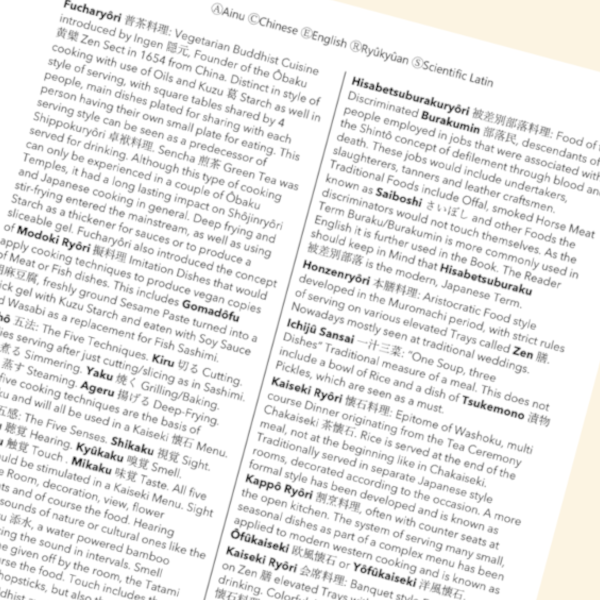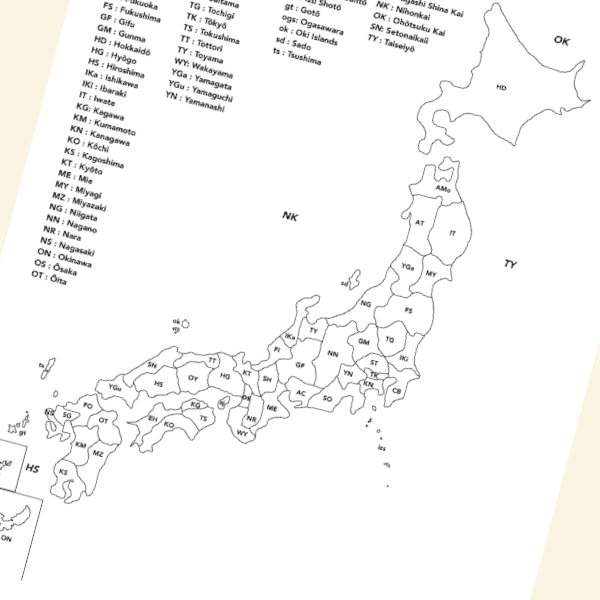
This Chapter explains the many aspects of Japanese Cooking.
Nihonryôri 日本料理: General Term for Japanese Cooking.
Washoku 和食: Traditional Japanese Cooking developed during the Edo period with high emphasis on Seasonality and enhancing the individual Ingredients, rather than overpowering them.
Yôshoku 洋食: Western influenced, Japanese adapted cooking. This started during the Meiji era and was becoming much more popular during the Taishô and Shôwa eras. Foods include Korokke コロッケ, Karê Raisu カレーライス or Tonkatsu 豚カツ. It does not include Tempura 天麩羅, as this was introduced during the Edo period.
Chûkaryôri 中華料理: Chinese Cooking adapted for the Japanese taste. This includes Rāmen ラーメン and Gyôza 餃子. Chinese Cooking, that has not been adapted, or only lightly is known as Chûgokuryôri 中国料理.
Shôjinryôri 精進料理: Buddhist monastic Cuisine. Vegan but with a history of using Dairy products. What is cooked as Shôjinryôri today is strongly influenced by Fucharyôri 普茶料理, a Chinese inspired Buddhist Cuisine, which was introduced to Japan in the 17th century.
Another Part of this Chapter involves the many Regions of Japan, including a Map.

For more information, buy the book.